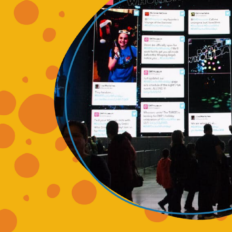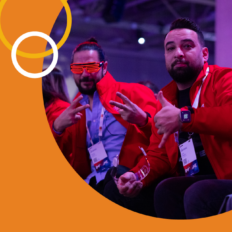Even if they aren’t working, sometimes attendees just need some time to disengage. Creating physical programming space that lets audiences decompress without FOMO is important, and can help gain their attention in the long-run. This could include “play” areas outside the ballroom, outdoor games, or even free yoga sessions.
Spaces can also communicate more about your brand than words. Modern audiences, especially younger generations, don’t want to hear about brands—they want to experience them. Intimate, mini-theater demos, pop-up gamification activations, immersive and interactive content… these experiences are all gaining traction because they let audiences connect with your brand on their terms.
But those spaces don’t have to be way out of the ordinary. Consider underutilized spaces like long hallways and semi-empty foyers as opportunities to engage and entice attendees. For example, for one of our clients we created a series of movie posters that brought to life some key challenges and opportunities facing the industry in the next few years. There was a QR code in the corner which took them to a site where they could learn more. What could have a been a boring hallway used purely as a space to connect one place to another became an interactive exhibit that communicated key brand messages.
Beyond the physical space, attendees want to choose how to spend their time. Open slots for free-choice segments with content delivered in multiple mediums (workshops, roundtables, daily summaries, etc.) helps important messages resonate with more audiences.
We’re seeing a lot of interesting uses of space to help attendees both focus their attention, and have a chance to get to disconnect. For more innovative ways to capture your audience’s attention, check out our full Brand Experience Trends report here.



